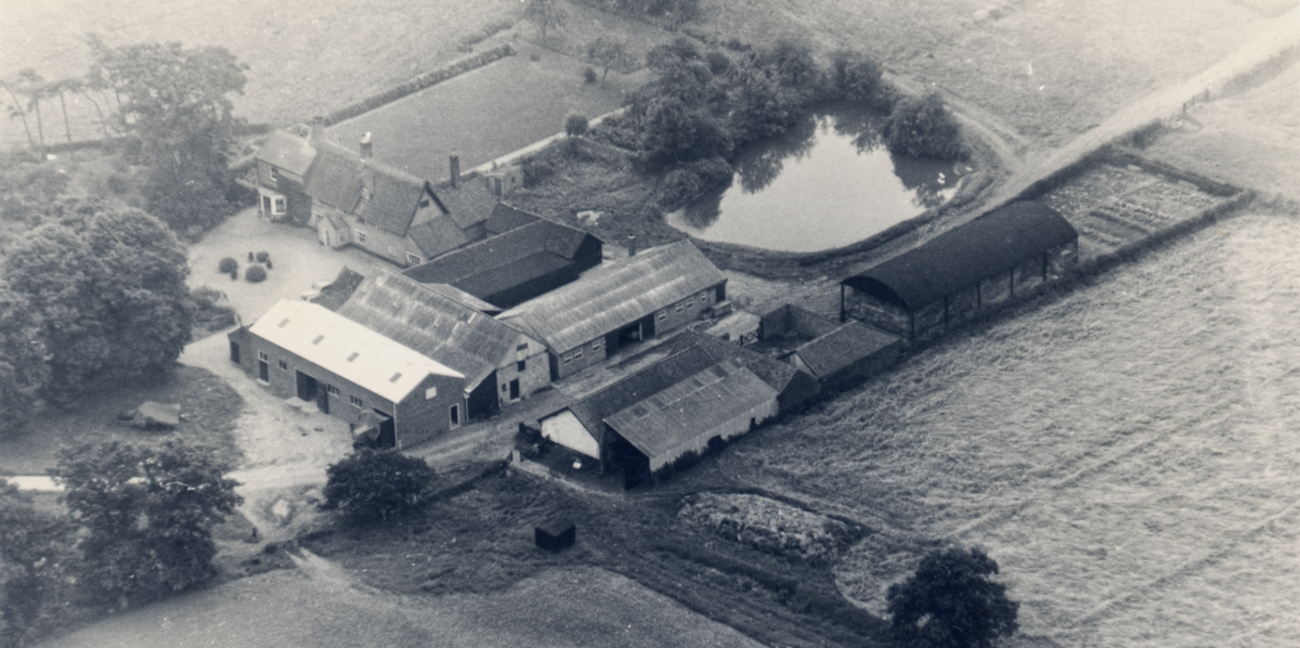
After the large auction of three of the village farms, in 1869 – “Lot 1”, Fir Grove Farm had a period of turbulent ownership. Much of this resulted from the fall in land prices in the early 1870s when USA farming expanded and was able to flood the British market with lower cost produce. The depression in British land prices would have been especially difficult for anyone who was heavy exposed through a large mortgage for farmland. At that time, the new owners of Fir Grove Farm were ensnared in this problem and, eventually – resulting from the death of a lender, a bankruptcy ensued.
The legal consequences remained for years. The Thorpe sisters became the new owners – with Dennis William Long as a new Fir Grove tenant farmer from 1889. The owners saw him as a potential buyer but, reading between the lines, the parties appear to have had difficulty in agreeing an acceptable price.
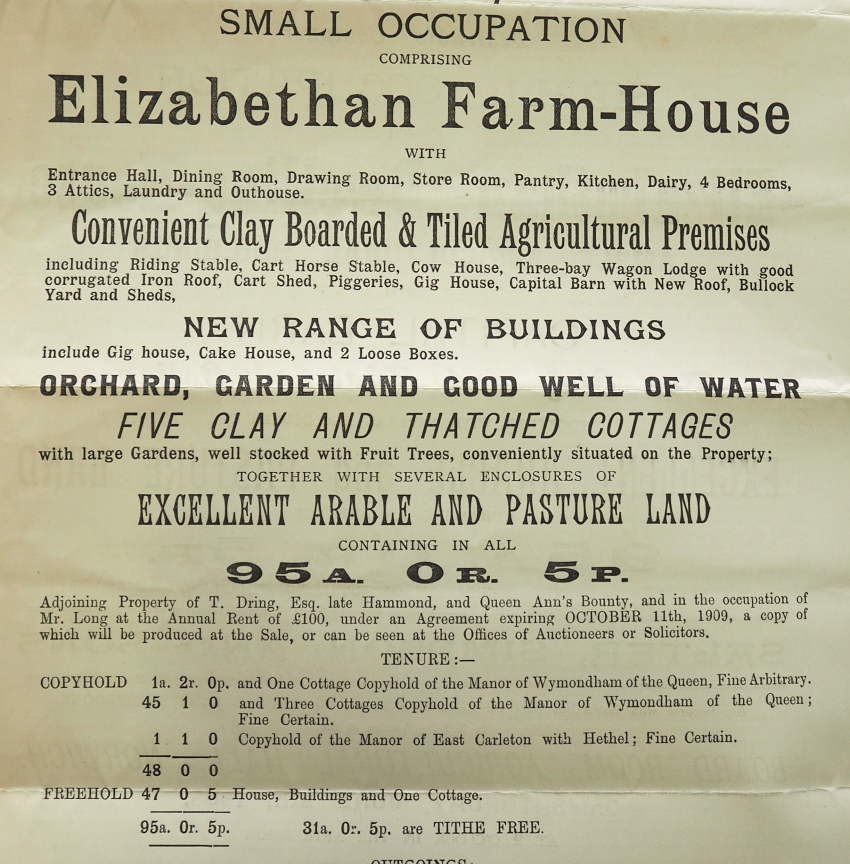
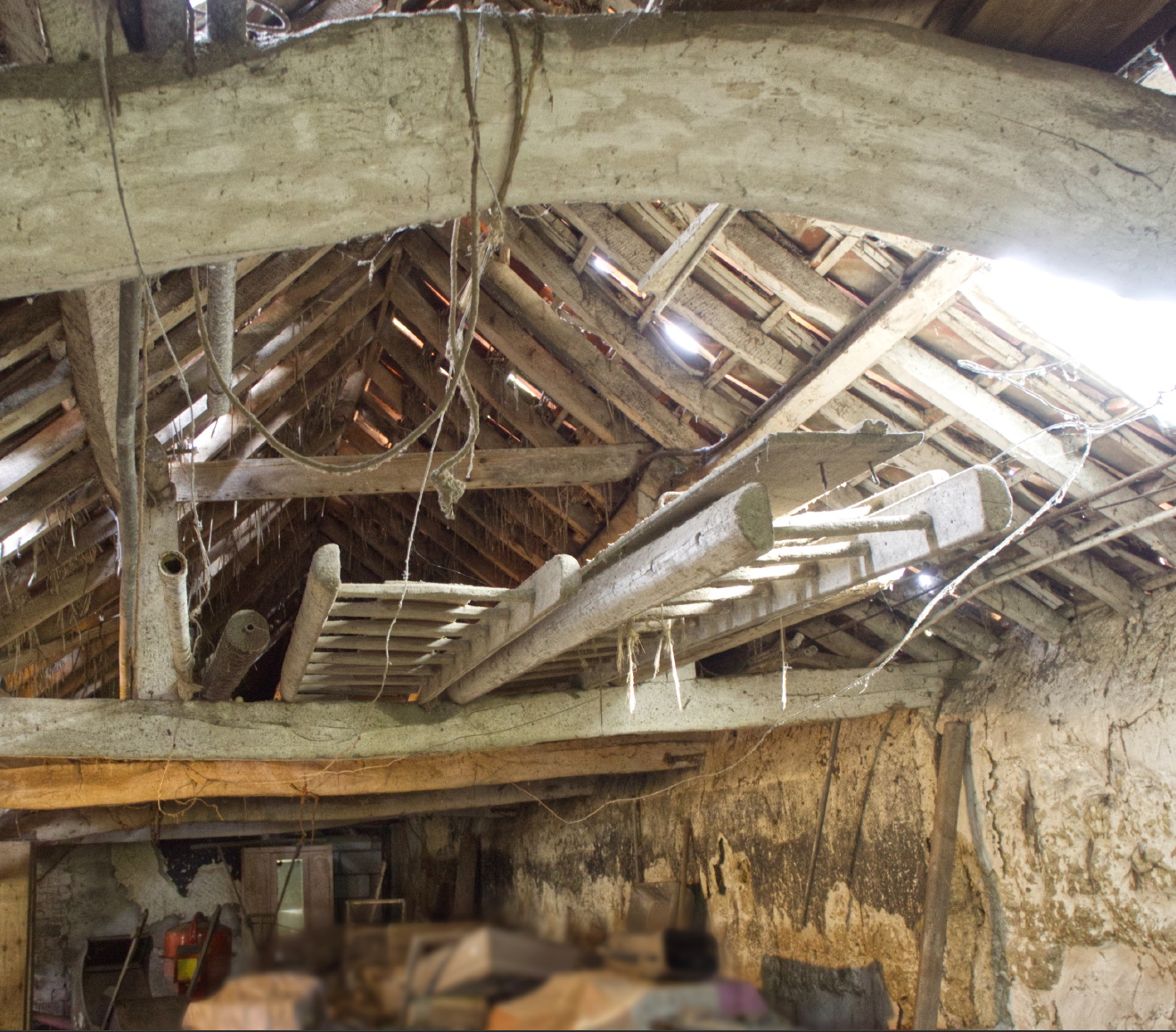
– probably several hundred years old
Eventually, in June 1912, there was a sale. Dennis William Long offered £3,000 and the deal was done. In the years since the 1869 auction, the monetary value of Fir Grove had fallen by more than half.
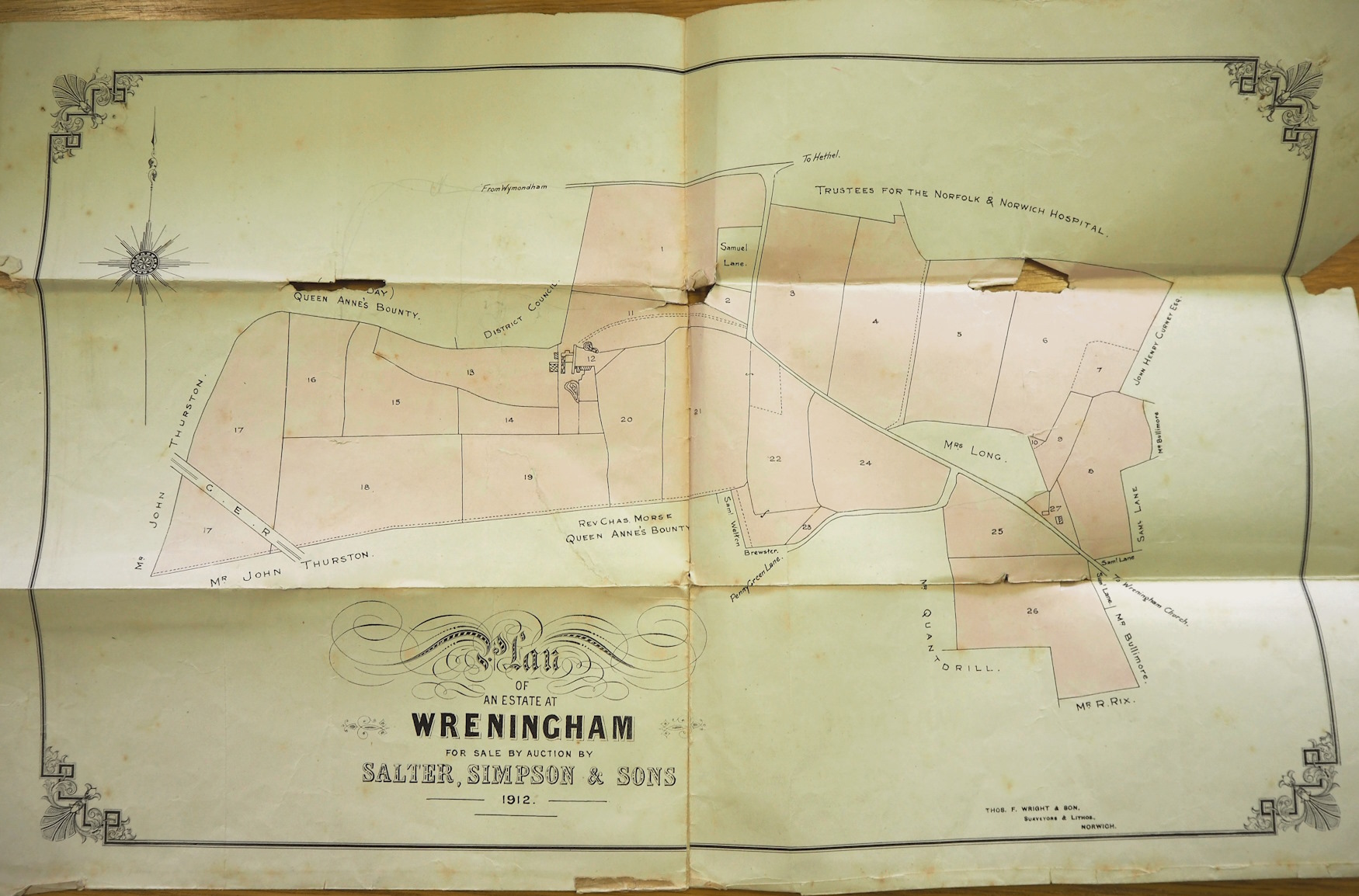
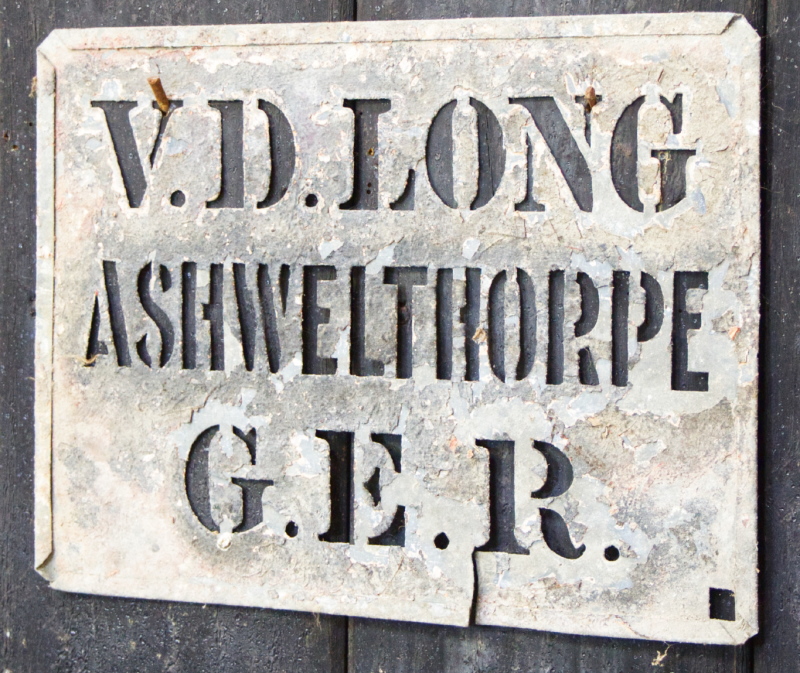
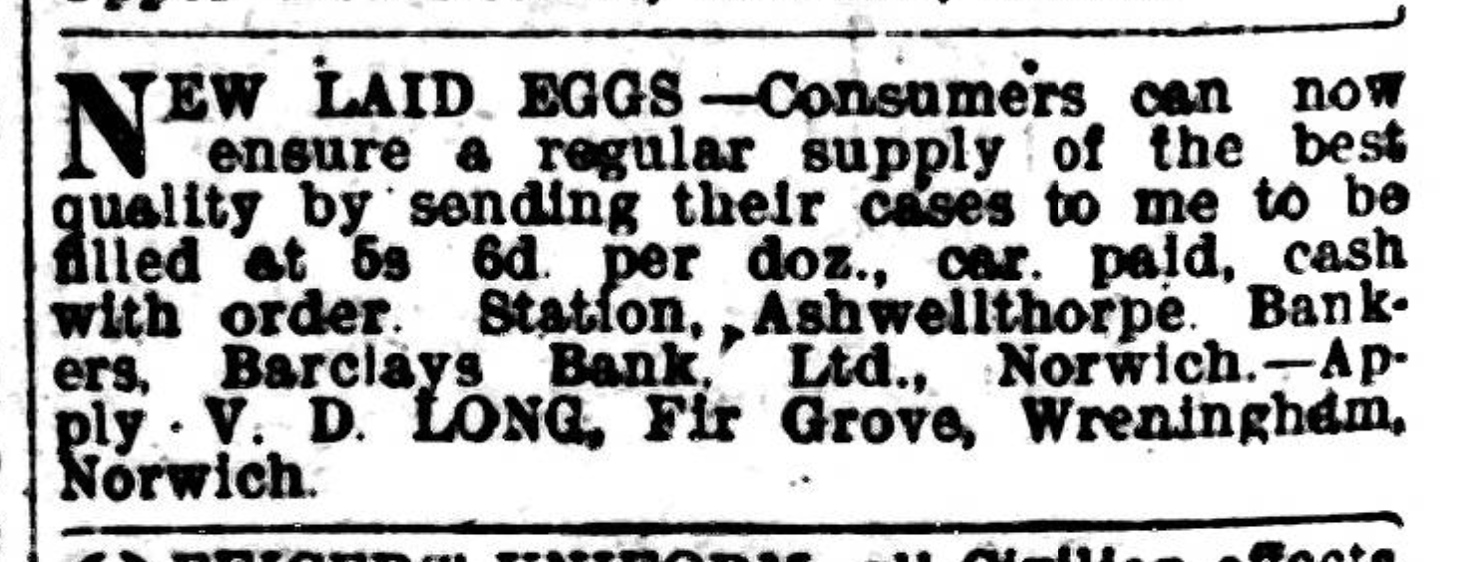
Optimism aside, the railway was a boon for local farmers who were able to tap into whole new markets – the equivalent of today’s road transportation.
With thanks to The British Newspaper Archive.
Farm lives can take many unexpected turns. There was an interesting court case in the early 1900s.
The post WW2 years saw the introduction of new equipment including two (second-hand) combines. Government grants were eagerly taken up – both to improve efficiencies and increase the overall production levels of food.
Fir Grove was used to demonstrate the benefits of this new age to farmers across the area. Maybe this was helped by a “Min of Ag” office which had been set up, nearby, on the post WW2 Hethel airfield?
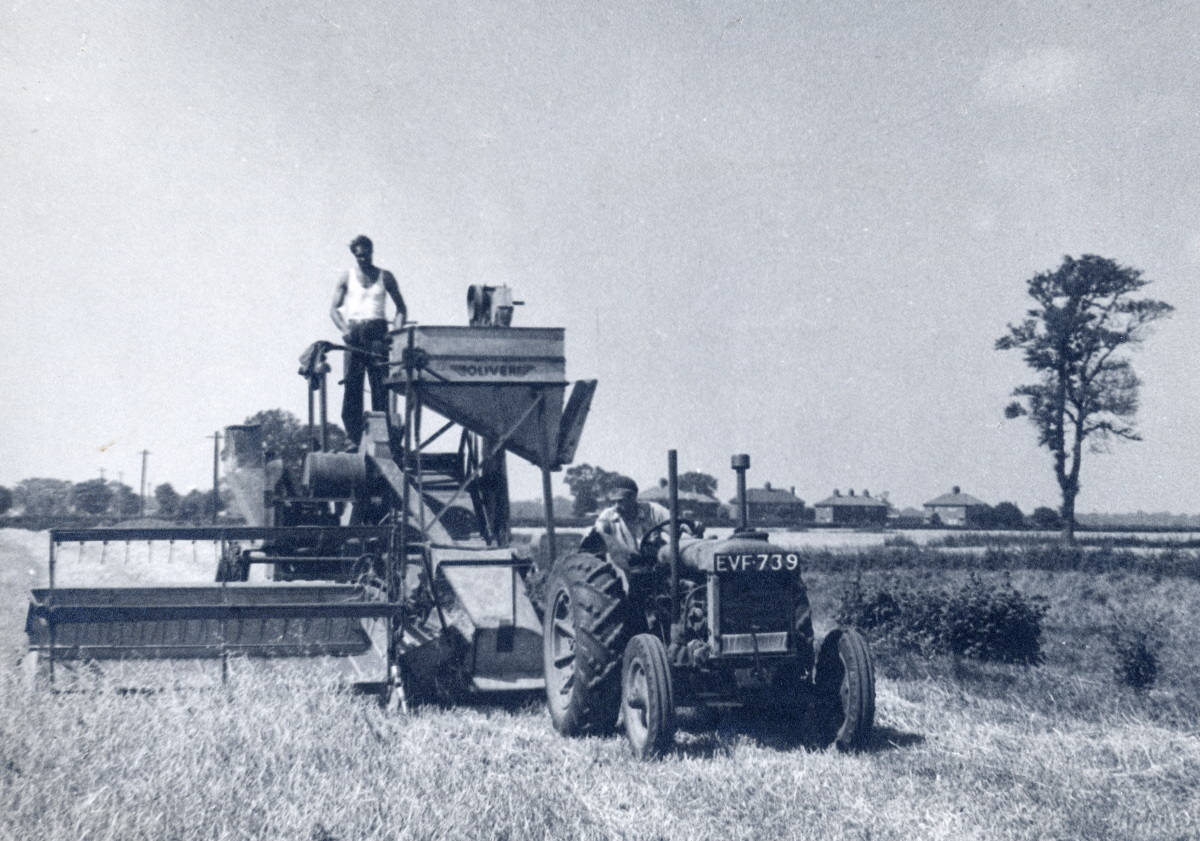
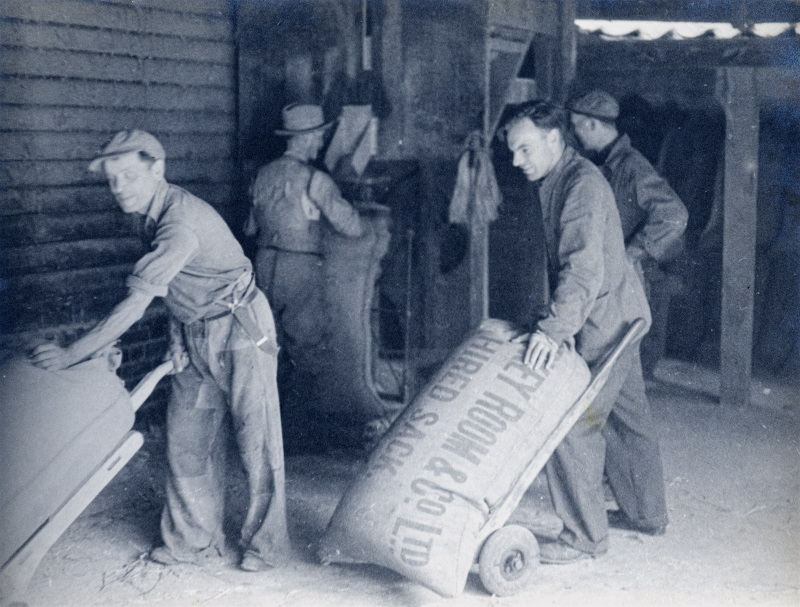
In 1946, the harvest was greatly assisted with the arrival of a new grain dryer (partly shown in the background of the photo).
Here are William Brown (cowman), William Copeman (horse man), Geoffrey Deller (holidaying school teacher – front right) and William Welton (cowman) all getting on with the job.
Elsewhere, we have seen information about sowing and cropping from other farms during the 1800s. Here is a page extracted from a farm notebook for Fir Grove relating to 1947 and part of 1948.
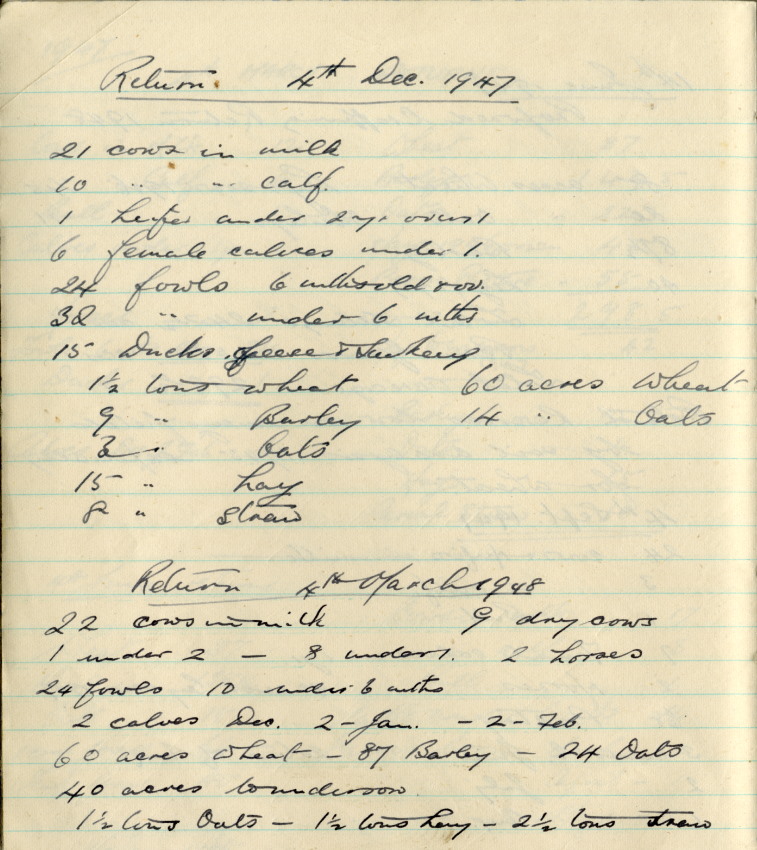
The present-day National Heritage List for England includes the farmhouse at Fir Grove.
The Modern Era
As with many farms, there were business side-lines. Until recently, the farm workshop still contained a jig which was used to make traditional wooden (“five bar”) farm gates. One of the fields includes an old gravel quarry whose contents were once used to repair Wreningham’s roads.
Starting in the late 1900s, about 70 acres of the farm was planted as woodland under a national scheme usuing native trees. Master-minded by Dennis Arthur Long – and known as “Long’s Wood“, it represents an investment for the future.
A more recent addition has been the involvement in the “Coronation Meadows” project: a national initiative founded by (the then) HRH Prince Charles, aiming to reverse the decline of traditional hay meadows as well as creating new ones using traditional local seeds from the area. This has resulted in a meadow at Fir Grove field receiving seeds which are native to this part of South Norfolk.
